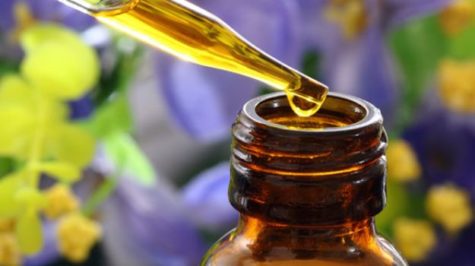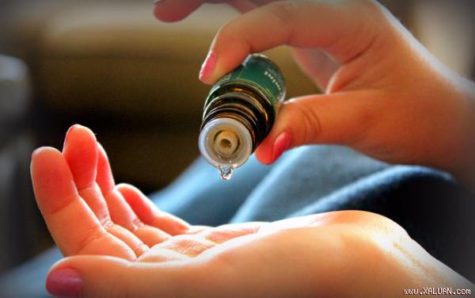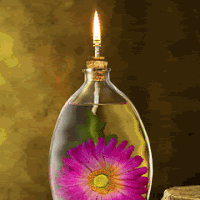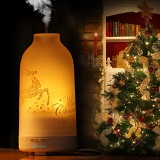Safety Tips
A Guide To Essential Oil Diffusers
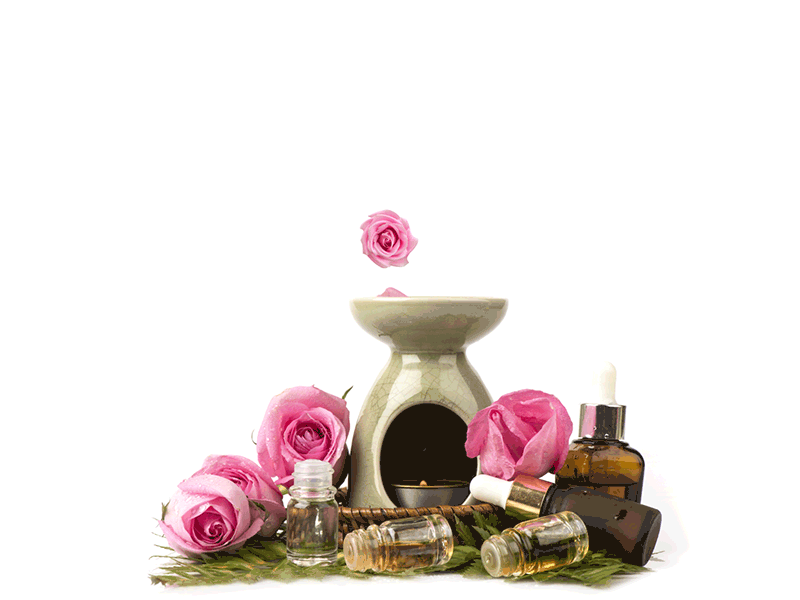
If you’re an essential oil newbie (or even if you’ve been using oils for awhile) you might feel completely overwhelmed by the different methods of diffusing essential oils. After all, there are a vast array of diffusing devices out there in the market place. How do you know which essential oil diffusers are the best to use? Which ones are best avoided? Have no fear, this article will help you through the maze of essential oil diffusers. You’ll discover how they work, and the pros and cons of each one.
Tea Lght Essential Oil Burner
- How It Works:
Oil burners usually work by placing the essential oils of your choice into a ceramic reservoir, with or without water, and then placing it over a heat source. The heat source is usually a naked flame (like a tea light candle). The heat acts to vaporize the essential oil and release it into the air.
- Pros:
Oil burners are cheap, easy to find and they produce an excellent aroma. They are portable, robust and don’t easily break, and can be used pretty much anywhere that is safe (ie not a fire hazard and out of reach of children and pets). They are lovely to look at, and only a few drops of essential oil are required.
- Cons:
Oil burners require a lit candle, which means you’ll have a naked flame in your home and that means there is a fire risk. Also, oil burners create an aroma by heating the essential oil, which changes the composition of the oil slightly and you don’t get as pure an aroma as when you inhale the oil in its natural room temperature state. The heat from the candle flame obviously heats the bowl with the water and oil which means there is a risk of being burnt – be careful not to touch the bowl or spill the contents!
- Safety Precautions:
Oil burners are best kept out of reach of children and pets and on raised surfaces – bedside tables, coffee tables, cabinets, mantelpieces, desks and worktop surfaces etc. Also, please don’t leave them unattended… there is a naked flame and anything can happen! If you leave the room, it’s best to put the candle out. Make sure the water doesn’t completely dry up whilst the candle is still burning or you’ll burn the container.
Electric Essential Oil Burners
The electric essential oil burners are similar to a tea light essential burner, but instead of a lit candle, an electric element, such as a light bulb, is used to create heat, which vaporizes the oil and disperses it into the air. Some types consist of a terracotta ring that fits over an incandescent light bulb.
- Pros:
These burners are cheap, easy to find and they produce an excellent aroma. They are portable, robust and don’t easily break, and can be used pretty much anywhere within reach of an electrical outlet, and is safe (ie not a fire hazard and out of reach of children and pets). They are lovely to look at, and only a few drops of essential oil are required.
- Cons:
They are powered by electricity so there is a risk of electric shock – they should not be used in bathrooms or within reach of children or pets. Oil burners create an aroma by heating the essential oil, which changes the composition of the oil slightly and you don’t get as pure an aroma as when you inhale the oil in its natural room temperature state. The reservoir will be hot, so be careful not to touch the bowl or spill the contents!
- Safety precautions:
Electric oil diffusers are a little safer to use than oil burners because there is no naked flame. Just be very careful about the wire, especially with pets around! Also, don’t use them in a bathroom – electric appliances and bath water are not a good combination! Make sure you get one that has an automatic off switch. This helps to keep the diffuser in good working order and also helps to prevent any electrical problems that may cause a fire.
Reed Diffuser
- How It Works:
A reed diffuser comprises a small bottle or vase that is partially filled with an aromatic oil and several natural rattan reeds. The oil wicks up the reeds and releases the fragrance into the room where the diffuser sits, on an ongoing basis.
- Pros:
Reed diffusers look stylish. If you make your own you can utilize high quality essential oils and enjoy the aromas. They are inexpensive to make (depending upon the essential oils used).
- Cons:
Reed diffusing tends to be a more expensive way to diffuse essential oils because a large quantity of essential oil is required. Unlike nebulizers or ultrasonic diffusers, the aroma of the oil is not carried throughout the room, but only in a small zone around the reeds.
- Be Wary of Reed Diffuser Kits
The kit-style reed diffuser generally comes with a container of fragrance. This fragrance not usually therapeutic grade, and cannot be counted on to be free of pesticides, herbicides, or other chemicals that you may not want to diffuse into your home.
By making your own reed diffuser using organic essential oils and other good quality ingredients, you can turn this style of diffusing into a much healthier and enjoyable way to diffuse essential oils.
Nebulizer Diffuser
- How It Works:
When you turn on the nebulizer − sometimes known as a cold air diffuser − an air pump sends condensed air to a nozzle tube which controls the direction of the oil. A stream of air whizzes across the nozzle tube, creating a vacuum and causing the essential oils to move upward. As they rise, the stream of pressurized air hits the essential oil droplets and causes them to atomize into micro-particles which fill a glass reservoir. Once in the glass reservoir, the micro-particles rise and are emitted out of a glass cap as a vapor which is released into the room.
- Pros:
This type of diffuser is considered to be one of the most therapeutic because the essential oils are not diluted − the nebulizer operates without water or a carrier oil. It also does not heat the essential oils, thus the therapeutic properties of the oils are retained. The essential oil molecules released into the room are so fine they tend to remain suspended in the air for a few hours. Some feel this method energizes the oils and increases the oxygen content in the oil molecules. Another benefit is that it adds no humidity to the room, which can occur with the ultrasonic cool mist diffuser. Most models allow you to sit the bottle of essential oil directly on the atomizer so it is relatively easy to use.
- Cons:
Nebulizers tend to cost more than other styles of diffusers for essential oils. A nebulizer can be fairly noisy while operating unless it is specifically designed not to be. To avoid this, look for models that say “whisper quiet” or “silent.” Because the essential oils are not diluted, much more essential oil is utilized during operation. This method really eats up the oils.
It is more difficult to use a blend of essential oils since a single bottle is normally placed on the atomizer. You can overcome this by mixing up the oils of your choice and putting them into an essential oil bottle, or by using a pre-made essential oil blend.
Ultrasonic Cool Mist Diffuser
- How It Works:
An ultrasonic diffuser has a water reservoir that is covered with a lid. At the bottom of the unit is a small, flexible membrane which vibrates ultrasonically. This passes energy to the water, breaks up the water molecule, and turns it from a liquid into a vapor. The vapor is propelled into the air and carries along with it the volatile components of the essential oils. It effectively disperses the oils you are using into the entire room where the diffuser is sitting and helps them to stay suspended in the air for a long period of time.
- Pros:
This is one of the most economical ways to diffuse essential oils. Due to the fact that the oils are dripped into a water reservoir, only a few drops of each oil are required. The cool mist diffuser can double as a humidifier − it does add humidity to the room. This type of diffuser generally has a timed function so you can set it to run for a particular length of time. It usually also has a safety off-switch when the water level falls too low, and is easy to clean and refill. Some ultrasonic diffusers also have lights that change colors, which is a nice feature to some people. This is a good style of diffuser to use with children as the concentration of the oil will not be too potent.
- Cons:
The ultrasonic cool mist diffuser can be a little on the expensive side although cheaper models are increasingly available. Also, because it does emit the oils in a micro-fine mist, it does add humidity to a room. If there is an existing mold problem, this may not be the best diffuser to choose. It is also not recommended to use citrus oils with the cool mist diffuser because they can potentially damage the diffuser.
The Oldest Method – Your Hands!
- How It Works:
Simply drip the oils you wish to breathe into your hands, just a drop or two will suffice. Rub your hands together and make a tent over your nose with your hands (be careful to leave your eyes out of the tent) and breathe in deeply. Some have described this process to be as if one were pulling the oils up into and over the brain and/or lungs. Take several deep breaths.
- Pros:
This is one of the quickest ways to get instant results. It is cost-effective, as it only requires one to two drops of essential oil. It can be done almost anywhere.
- Cons:
The benefits are only enjoyed by one person, and only briefly as the oils are absorbed by the skin quite quickly. If the desire is to get rid of airborne bacteria, or mold, or to have more than one person reap the benefits, diffusing by nebulizer or ultrasonic diffuser is preferable.
From: The Truth About Cancer and other sources.
Essential Oil Safety Precautions
What follows is a list of the indispensable precautions for the safe use of essential oils. If you experience a problem in spite of everything, the first two guidelines are intended to counteract emergencies arising out of unintended contact with sensitive skin areas and mucous membranes.
- Never try to dilute essential oils with water.
As their name implies, essential oils do not mix with water. If they did, they wouldn’t float to the surface in a steam distiller, where they can be collected easily by separation flow. So it is important to remember if essential oils should ever irritate sensitive skin, they cannot be diluted with water. Water will cause the oils to burn even more. A comparison can be made to an oil fire: Water will tend to spread such a fire rather than extinguish it. Essential oils must be diluted with some type of vegetable oil.
- Never let essential oils come in contact with mucous membranes or sensitive skin.
By the very nature of extraction, essential oils are highly concentrated substances. Essential oils, because of their highly concentrated state, must never come into contact with mucous membranes or sensitive areas of the skin. If essential oil is accidentally splashed into the eye, the irritation is very intense The oil must be diluted immediately. Almond oil is mildest for the eyes, but any pure vegetable oil will help. Put it on a cotton ball and delicately dab at the eye.
When essential oils come in contact with other areas of sensitive skin (armpits, genital areas, face, etc), vegetable oil can be applied the same way to dilute the essential oil, thus reducing the irritation
If essential oil is swallowed, one or two spoonfuls of virgin vegetable oil must be taken immediately to soothe the irritated mucous membranes and dilute the essential oil reaching the stomach. This will also slow down the speed of passage through the gastric mucous membranes and penetration into the blood.
- Never add undiluted essential oils directly to bathwater.
This precaution must be taken, again, because the oils will not mix with the water but will float on top of it. When essential oils are used this way in a bath, the floating oil will stick to the skin in its concentrated form, particularly to the sensitive genital areas. This can cause a very unpleasant, even serious irritation, because hot bath water actually increases the irritation.
Instead, dissolve the oils first in powdered milk, egg yolk, or even coarse sea salt. Never try to use more than 10 to 20 drops of essential for one bath. For further safety, add the essential oil / powder mixture slowly over time while you are in the bath, rather than all at once.
- Generally, people with allergies must be very cautious with essential oils.
My first advice to those with allergies is to choose the very highest quality oils you can find. Residues from chemical agriculture are in fact the most likely source of skin reactions. As much as possible certified 100% organic essential oils should be used. Do The Patch Test before using any new essential oil.
- Some essential oils are light-sensitizing, so exposure to sun must be avoided after application.
This is particularly true of citrus essences, extracted by cold-pressing. The most common case is that of the essence of Bergamot, but caution must be used with most citrus oils. Beyond the citrus varieties, I should also mention the essential oils of Angelica and African Marigold. Ignoring this rule when using these essential oils could result in brown skin patches which could become permanent. There may also be an increased risk of skin cancer.
- Some essential oils have strong caustic characteristics, and should be used very cautiously, generally in a diluted form.
This applies to the essential oils rich in phenols (thymol, carvacrol, eugenol). Examples include the phenol Thymes, Oregano, Savory, Clove, and Cinnamon Leaf. The essential oil of Cinnamon Bark is also very irritating. Also the oil of Lemongrass, concentrated in citrals, can be highly irritating.
- Essential oils rich in menthol should not be used close to the throat or neck on children under 30 months of age.
This is the rule taught in medical and pharmacological courses concerning menthol. In natural aromatherapy, we do not use menthol in its pure state, but use instead the essential oil of Peppermint, which is very different. Nevertheless, as a supplementary precaution, I prefer to include this rule as it is learned in standard medicine.
- Care must be taken to tightly close essential oil bottles after use and to always keep them out of reach of children.
This rule is self-evident, but must be restated because it is broken too often. It applies to all chemical products and medications.
- Taking essential oils orally requires oils of impeccable quality and the direction of a qualified health professional.
This basic precaution does not preclude taking them in diluted form in an appropriate medium. Even so, problems that arise from taking essential oils internally are generally due to the fact that they are taken in a concentrated state which leads to rapid absorption in the stomach and a very quick passage into the bloodstream. Taking one or two drops of a mild essential oil of high quality, diluted in honey, does not entail any particular risk. It just requires good common sense.
- Always keep some vegetable oil readily available when using essential oils.
Any essential oil kit must contain a vial of good quality carrier oil. This carrier oil is important not only for diluting the essentials, but also for safety in case an undiluted oil causes sensitivity, or is accidentally applied to a sensitive area.
Source: Natural Home Health Care Using Essential Oils
The Patch Test
Some oils have been known to cause irritation, allergic reactions, or sensitivities on some people. However, all substances have been implicated to some degree in unpleasant reactions on someone… so it would be wise to try the patch test before using a new essential oil or any other cosmetic substance externally.
If you have sensitive skin or a history of allergies, then by all means use a patch test to gauge your relative sensitivity to essential oils.
Here’s how to do it:
Wash an area on your forearm about the size of a quarter and dry it carefully. Apply a drop of the essential oil. If you are very sensitive in general you may wish to dilute the oil equally with a bland carrier oil such as Olive oil and apply this dilution.
Then add a loose Band-Aid and wait 24 hours. If there is no reaction – terrific – go ahead and use the oil in your formulas. Do, however, keep all essential oils away from the eyes and from moist mucous areas in general.
From: The Aromatherapy Handbook
